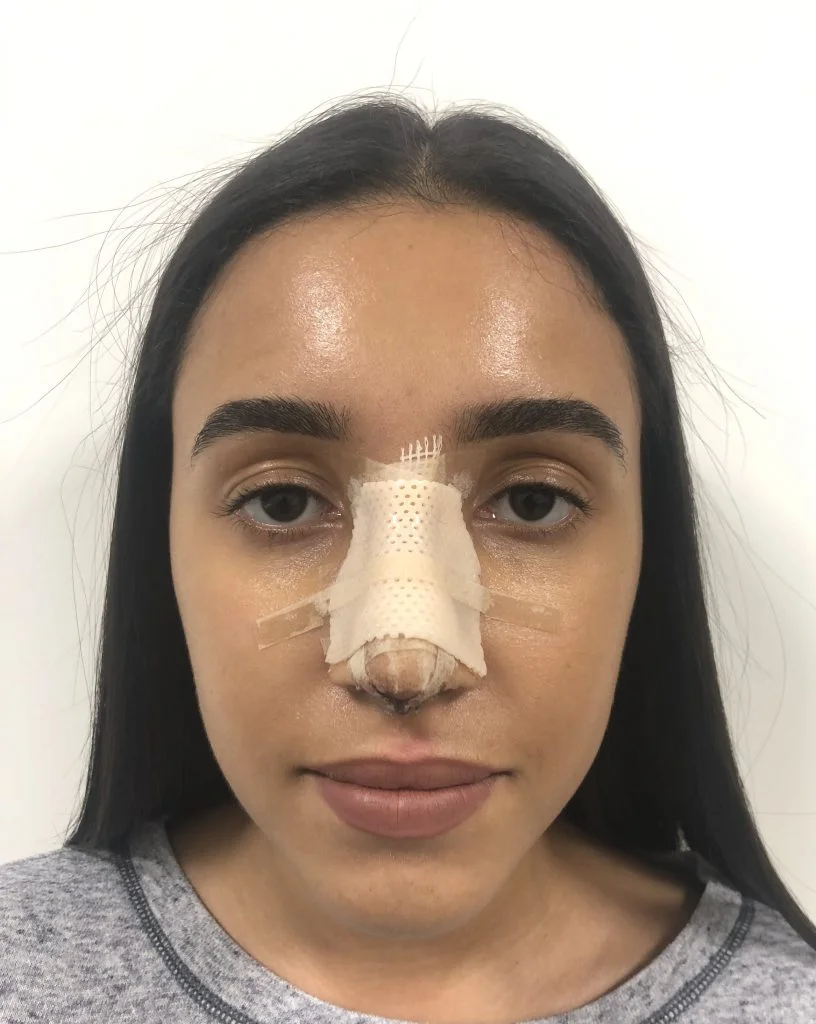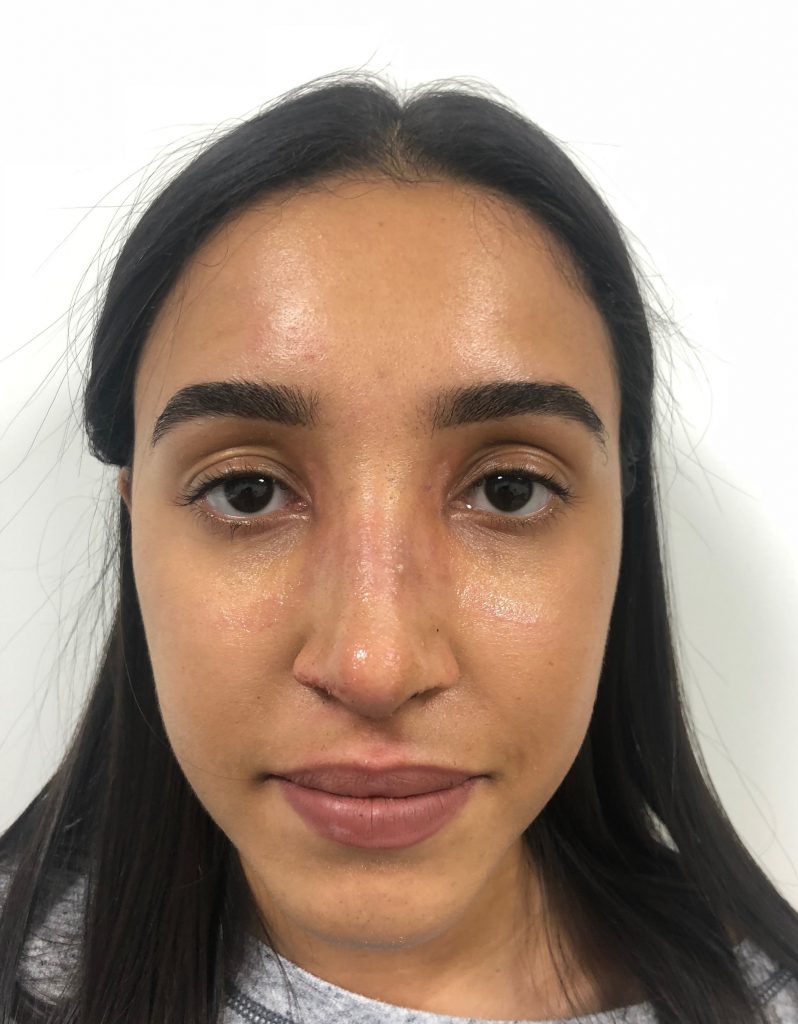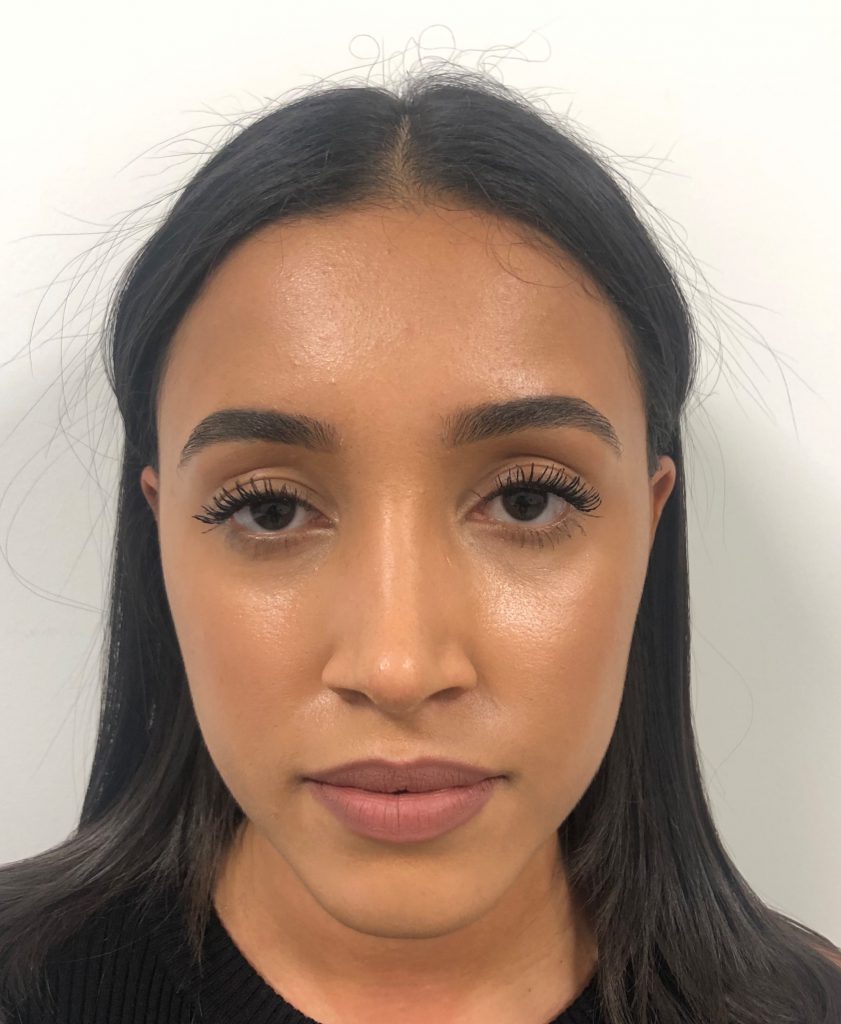Aesthetic surgery is a major undertaking for most patients. As such, proper preparation for the whole ordeal – including the periods before and after – is essential for a positive outcome. This is especially so for a procedure as complex and nuanced as rhinoplasty, or the surgical alteration of the nose.
Our experienced London Consultant Plastic Surgeon, Mr William Townley, understands that there is often a degree of uncertainty about what to expect after rhinoplasty is complete. Below, Mr Townley has mapped out an outline of the different phases of a typical rhinoplasty recovery process.
The Day of Surgery
The procedure is performed under general anaesthesia; however, patients are often awake, sitting up, and talking within half-an hour of the end. After surgery (which takes about two to three hours), a silicone splint is placed on the nose and a few sutures under the tip. The majority of my patients go home on the day of surgery, but can stay the night in hospital should they choose to.
The First Week
During the first week, patients should gradually feel ready to return to their daily life. At their own pace, they should be able to eat and drink normally; walk to shops; and look after themselves. After a week, the patient will return to Mr Townley for suture removal and a follow-up visit.
Although many patients worry about postoperative discomfort, most do not experience significant pain. Any discomfort that does occur can often be controlled with simple regular painkillers (e.g. paracetamol, ibuprofen). During the first two to three days, patients often experience oozing in the nostrils and the back of the throat. Bruising and swelling are also normal at this stage, but should resolve promptly if the patient closely follows aftercare instructions.

The Second Week
The swelling and bruising should dissipate around this time, allowing patients to function socially (e.g., go out for dinner) or return to work without fear of being noticed. Additionally, patients are usually able to breathe through the nose again at this point.
At about two weeks, the splint is removed. Effects are generally noticeable right away, although it will be many months before the final result is achieved. Be aware that seeing your new nose for the first time may be an emotional event. Most patients are thrilled, but at the same time, the change can initially feel overwhelming. It is important to be patient with yourself as you journey through your recovery.

IMMEDIATELY AFTER CAST REMOVAL (IN THIS CASE AT 1 WEEK).
Two to Six Weeks
After six weeks, 60-70% of the swelling should be resolved. As swelling continues to fade, the effects of surgery should become increasingly noticeable. During this period, patients are typically safe to return to normal exercise (such as running, lifting weights, or going to the gym).
Breathing through the nose should return to normal; in fact, rhinoplasty often improves a patient’s ability to breathe through their nose. That said, if you suffer from hay fever, note that you may be more sensitive to allergens in the first season after your surgery.
Afterwards

After the six-week mark, changes should continue to occur – albeit at a much slower, week-to-week basis rather than daily. The final result is usually apparent after one year.
While the timeline explained above presents a common recovery experience, note that your healing process will depend on your unique case. As always, if you have any questions or concerns about this or any other facial plastic surgery procedure, we encourage you to reach out to our office.
Editor’s note: The original version of this blog was posted on 1 February 2019.
Previous Post Next Post